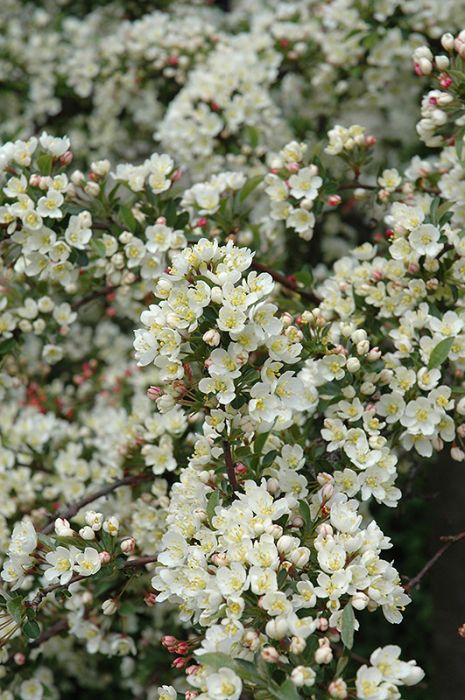What to Plant Near Black Walnut Trees
Black Walnut, Junglans nigra, and its close relative, the Butternut, Junglans cinerea, produce juglone which is toxic to many plants. Gertens Experts provide more information on what to plant and what not.




Out of stock
Coming soon, still growingBright red buds become single white flowers on this small crabapple with a horizontal, spreading habit. Good disease-resistant variety for small spaces.
At Minnesota's Destination Garden Center, we offer a diverse range of trees to suit any landscaping need. Whether you're looking for shade trees to cool your home or ornamental trees to add beauty and interest, you'll find the perfect tree at Gertens. Our knowledgeable staff can help you select the right tree for your space and provide tips for care and maintenance. Visit Gertens today and explore the unmatched variety of trees to enhance your outdoor environment!
Tina Flowering Crabapple | Malus sargentii 'Tina'
Height: 8 feet
Spread: 10 feet
Sunlight: full sun
Hardiness Zone: 4a
Other Names: Sargent's Flowering Crab, Roseybloom, Crabapple
Brand: Gertens
Description:
One of the most popular dwarf ornamentals, smothered in fragrant pink flowers in spring followed by red fruit in fall, artistic branching habit is very attractive; needs well-drained soil and full sun, makes a great accent in the mixed garden border
Ornamental Features
Tina Flowering Crabapple is covered in stunning clusters of fragrant white flowers with shell pink overtones and a pink reverse along the branches in mid spring, which emerge from distinctive cherry red flower buds before the leaves. The fruits are showy red pomes carried in abundance from early to mid fall. It has dark green deciduous foliage. The pointy leaves turn yellow in fall. The smooth brown bark and brick red branches add an interesting dimension to the landscape.
Landscape Attributes
Tina Flowering Crabapple is a dense spreading deciduous shrub with a more or less rounded form. Its relatively fine texture sets it apart from other landscape plants with less refined foliage.
This shrub will require occasional maintenance and upkeep, and is best pruned in late winter once the threat of extreme cold has passed. Gardeners should be aware of the following characteristic(s) that may warrant special consideration;
Tina Flowering Crabapple is recommended for the following landscape applications;
Planting & Growing
Tina Flowering Crabapple will grow to be about 8 feet tall at maturity, with a spread of 10 feet. It has a low canopy with a typical clearance of 2 feet from the ground, and is suitable for planting under power lines. It grows at a slow rate, and under ideal conditions can be expected to live for 40 years or more.
This shrub should only be grown in full sunlight. It prefers to grow in average to moist conditions, and shouldn't be allowed to dry out. It is not particular as to soil type or pH. It is highly tolerant of urban pollution and will even thrive in inner city environments. This is a selected variety of a species not originally from North America.
| Gerten Grown Plants | Gerten Grown Plants |
|---|---|
| Tree Type | Shade & Ornamental |
| Sun Preference | Full-Sun |
| Mature Height (Range) | 5 - 10 feet |
| USDA Hardiness Zone | 4, 5, 6, 7 |
| Common Family Name | Crabapple |